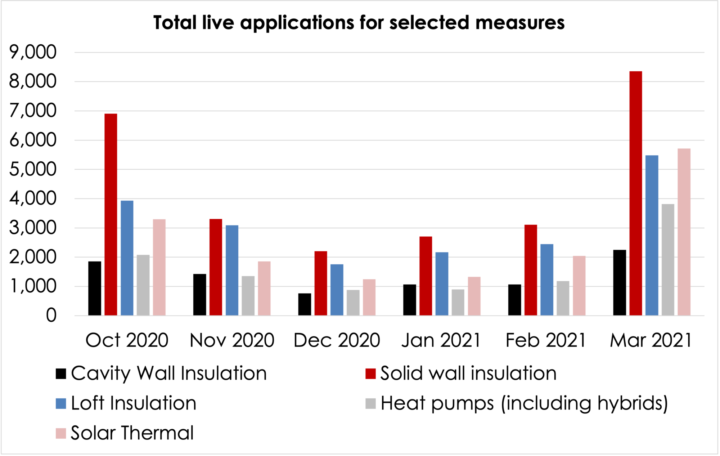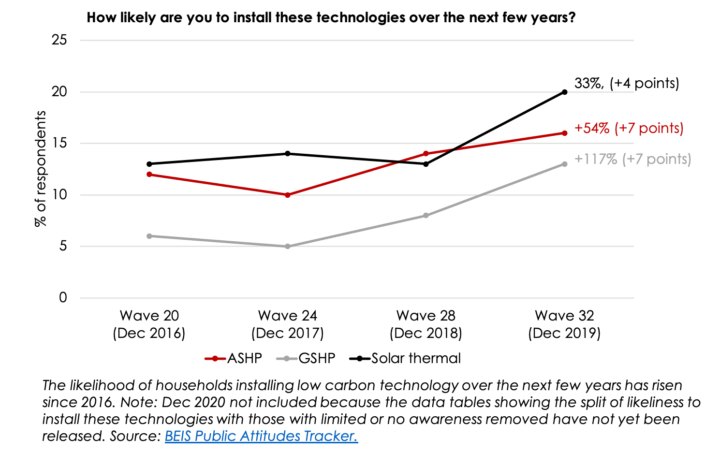Hot or not? What to make of the Heat Strategy rumours
What's likely to be in the Heat and Buildings Strategy and what would it mean for our homes?

By Jess Ralston
@jessralston2Share
Last updated:
Rumours are swirling in the energy world about one of the most important pieces of strategy this year – if not this decade. We may have been waiting two years, but the heat and buildings strategy is finally due for publication in September.
Some vital clues have been teased in recent weeks over its content, but some questions still remain. Namely, what would these policies and plans mean for Brits and the climate?
Pumping up commitments
You may have heard of one of the key soldiers in the battle against fossil fuel boilers; roughly 60% of the public have heard of heat pumps. That’s encouraging – the figure has roughly doubled in just one year.
And of the 40% who haven’t heard…well, expect to soon as the Government has already committed to installing 600,000 per year by 2028. That’s roughly three times less than the 1.7m gas boilers that are sold each year now, but still an order of magnitude more than the 67,000 units ordered in 2021. However, perhaps their rising popularity is not that surprising when they were one of the most in-demand technologies in the prematurely scrapped Green Homes Grant.

To help with reaching this ambitious target, there have been rumours that the £100m Clean Heat Grant – originally a £4,000 grant for just 25,000 heat pumps over two years – has been pumped up to £400m in total, providing a £7,000 lump sum upfront for early adopters to switch. Free Government cash to upgrade home heating? Would be rude not to. Expect this grant to be in high demand.
Commitments to heat pumps, which run on electricity, are likely to be echoed in a review of the distribution of various environmental and social taxes on gas and electricity bills – paying for things such as the Warm Homes Discount. At the moment, 2% of a gas bill is made up of these levies, compared to 23% of electricity bills. In a world where high proportions of electrification are likely to be needed to reach climate goals, this makes little sense and does nothing to help convince families to switch.
Making electricity cheaper and putting the pounds on fossil fuel gas will likely have a massive impact on customer’s choices. There are multiple ways of doing this, such as shifting some or all of the levies onto gas, or ring-fencing “legacy” spending and paying for it though general taxation instead. In any case, it really is one of the biggest no-brainer moves to make, as crucially dual fuel bills would remain unchanged.
Decision time
While some moves are no-brainers, there will need to be some considered decisions on homes and heating if the strategy is to be worth its salt.
Phasing out sales of new gas boilers may be frowned upon by industry dinosaurs but it’s recognised as absolutely necessary to reach net zero – the IEA advocate for 2025, the Climate Change Committee 2033 and 9 in 10 at the Climate Assembly supported a phase out in either 2032 or 2035. Will we see this sort of bold commitment, as we did with electric vehicles, or a more vague reference aiming for 2035 but with space to water down ambitions for fear of a backlash? With 70% of the public wanting urgent action on climate, kicking one of the most influential decisions into the long grass would be a missed opportunity.

Similarly, the Times suggests that a decision on the future of the gas grid – including blending in ‘green’ gases like divisive hydrogen – won’t be made until 2025, although trials to blend up to 100% hydrogen are underway today. This unnecessary delay leaves the door open for lobbyists to petition for fossil fuel infrastructure to be sustained for longer, a notion difficult to square with a country that wants to be a ‘world leader’ in the fuel.
The last crucial decision lies around new homes, which are well known to fall below par. Will the Future Homes Standard – requiring high levels of energy efficiency and low carbon heat – be brought forwards by two years to 2023? It could save nearly 450,000 tonnes of CO2 per year and mean that homeowners don’t have to bear the brunt of retrofits later on, but decision makers backed out last time. Here comes their second chance to make good.
Coupled with this are questions over whether new homes will be allowed a connection to the gas grid; unnecessary in a highly electrified scenario but potentially required for a future that relies on hydrogen in the grid.
Sufficient on efficiency?
Some more key decisions around energy efficiency will likely be laid out. Firstly a replacement for the hugely popular but poorly executed Green Homes Grant (that saw 130,000 voucher applications in just 6 months), preferably with a proper long-term plan for upgrading the nation’s homes.

Secondly there are some important rumours the Government will be looking to confirm or deny. A requirement to reach a certain efficiency standard when selling a home or undergoing a major renovation may do more harm than good, in light of all the other incentives that can be rolled out before a regulatory stick. These include zero interest loans for upgrades and growth of financial products such as green mortgages.
Similarly requiring boiler manufacturers to meet certain sales thresholds for low carbon heat – as has been done with electric vehicles – has been touted as an option. The strategy will need to make clear plans around this in order to drum up industry support.
Whatever happens, this strategy will be a big one. It will be the first opportunity for this government to start controlling the narrative on net zero homes. Will it be bold, practical and suitable for a country that wants to lead the world to zero emissions? Only time, and strategies, will tell….